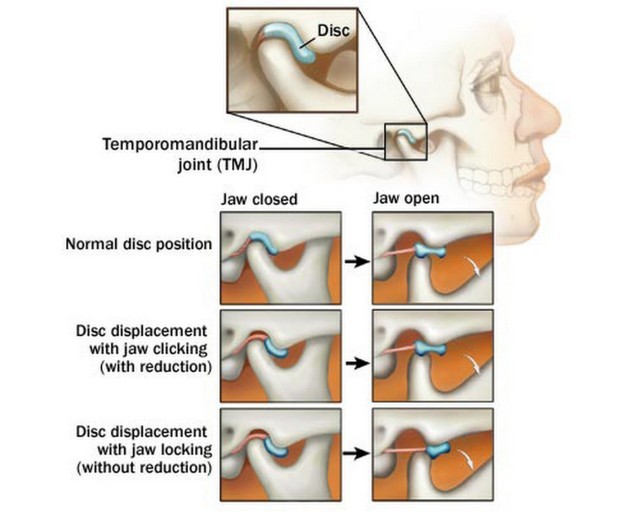TMJ ISSUES EXPLAINED…
A lot of people are surprised to discover that Osteopaths & Chiropractors treat the temporomandibular joint (TMJ), more commonly known as the jaw.
However, there are a number of compelling reasons that an Osteopath or Chiropractor may assess and treat the jaw.
TEnsion type HEADACHES
If you suffer from tension type headaches you may have have the urge to massage your temples when you get a headache. The temporalis muscle spans the temporal region and tight bands often exist within the muscle. The muscle assists in closing the jaw and may be tighter in people who clench, grind or chew gum frequently.
Neck Pain and OTHER HEADACHES
The jaw has a very close anatomical relationship to the skull and the upper neck joints. Osteopaths and Chiropractors will assess the jaw for unusual movement patterns or surrounding muscle tightness in headache and neck pain sufferers.
EAR ACHE
The TMJ is located between the lower jaw and the skull and is connected by a number of muscles and ligaments, with a cushioning disc in between. The temporal bone is the part of the skull that the lower jaw is attached to. The ear canal runs through the temporal bone and makes the TMJ an important area of assessment in people suffering from ear ache, especially where other causes for ear ache have been eliminated.
TEMPOROMANDIBULAR DISORDER
This problem often presents as pain over the jaw or clicking, grinding or locking of the jaw and is a common condition in people who chew gum, eat nuts or crunchy bread frequently. It also presents in people who clench their jaw or grind their teeth and may even be caused by a lot of dental work. The TMJ resembles a ball and socket joint, with an intervening disc that allows the joint to move smoothly. In people with a deep overbite, narrow upper jaw or crooked front teeth or where the lower jaw is too far back the bite may not be correct. This can cause the jaw to become displaced and the cushioning disc pulled forward. The displacement has a tendency to cause the lower jaw to move backwards, with the ball part compressing nerves, blood vessels and connective tissue at the back of the joint. The disc displacement can create clicking and popping of the jaw.
Here is where the temporomandibular joint is located:

And here is an illustration of what occurs when the cushioning disc is displaced:

Here’s a good detailed explanation of Temporomandibular Joint Disorder.
“Displacement of the disc also leads to increased contact between the condyle (lower jaw – “ball”) and the skull’s bony “socket”, which, over time can result in degenerative changes”.
Osteopaths and Chiropractors can assess and treat movement restrictions of the jaw and the function of the surrounding muscles. Exercises to move and streghen the jaw musles as well as stretches to relax the jaw may be part of your management plan.
Book in to see one of our Osteopaths or Chiropractors about TMJ-related problems or any other aspect of your health. If you are undergoing dental work such as having root canal treatment, braces or general maintenance it may be worthwhile asking your Osteopath or Chiropractor to assess and treat your jaw to alleviate tension and address any altered biomechanics.
Our services include Osteopathy, Chiropractic, Dry Needling,
Massage, Acupuncture, Traditional Chinese Medicine, Psychology and
Health & Wellness Coaching.
We inspire, equip, educate and support you to make the changes you
need to feel your best!
Call us
now on (02) 9453 3046 or book online!

